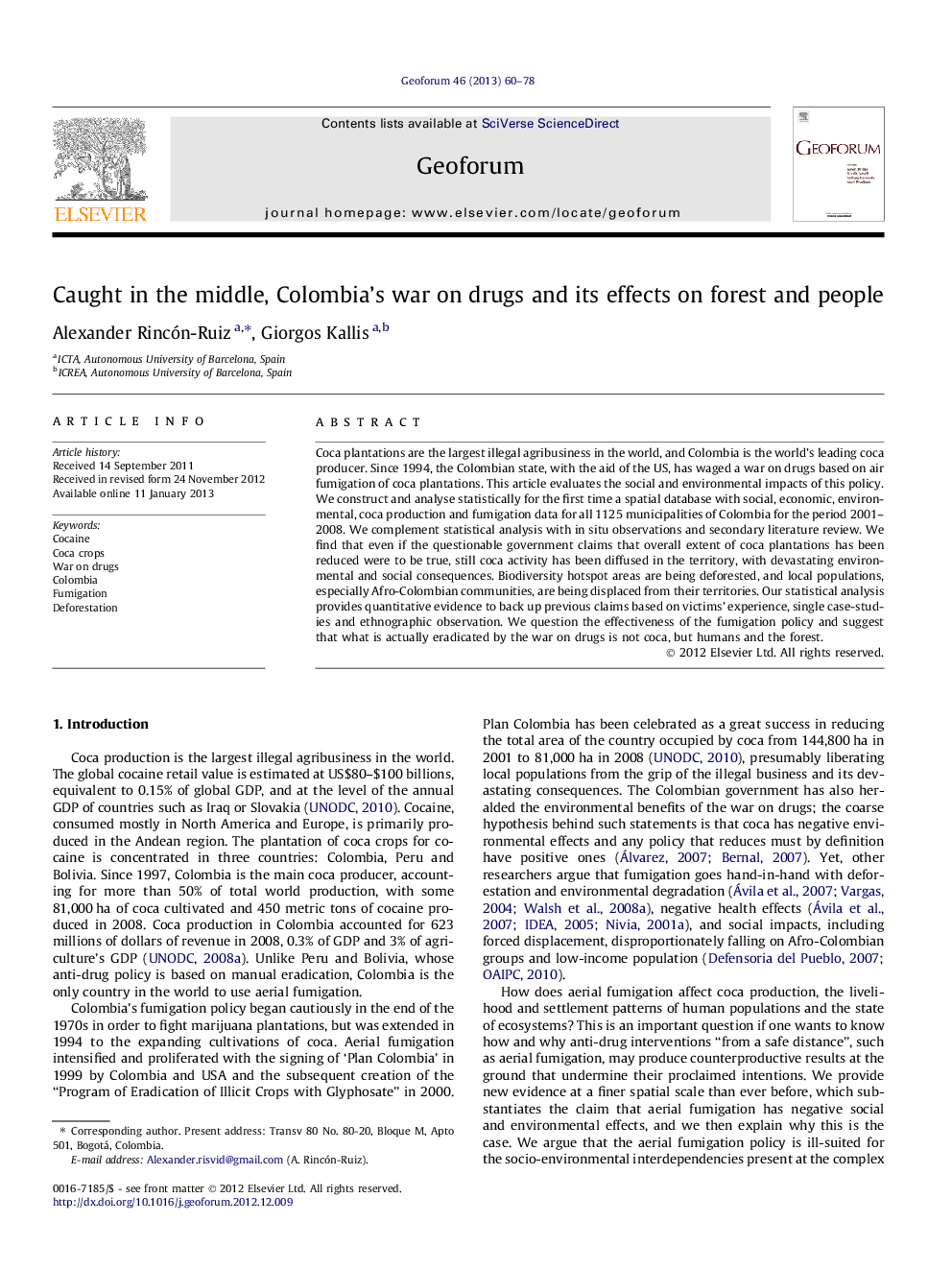| Article ID | Journal | Published Year | Pages | File Type |
|---|---|---|---|---|
| 5074366 | Geoforum | 2013 | 19 Pages |
Coca plantations are the largest illegal agribusiness in the world, and Colombia is the world's leading coca producer. Since 1994, the Colombian state, with the aid of the US, has waged a war on drugs based on air fumigation of coca plantations. This article evaluates the social and environmental impacts of this policy. We construct and analyse statistically for the first time a spatial database with social, economic, environmental, coca production and fumigation data for all 1125 municipalities of Colombia for the period 2001-2008. We complement statistical analysis with in situ observations and secondary literature review. We find that even if the questionable government claims that overall extent of coca plantations has been reduced were to be true, still coca activity has been diffused in the territory, with devastating environmental and social consequences. Biodiversity hotspot areas are being deforested, and local populations, especially Afro-Colombian communities, are being displaced from their territories. Our statistical analysis provides quantitative evidence to back up previous claims based on victims' experience, single case-studies and ethnographic observation. We question the effectiveness of the fumigation policy and suggest that what is actually eradicated by the war on drugs is not coca, but humans and the forest.
⺠There are displacement and diffusion of coca production after fumigation. ⺠Displacement is to areas of primary forest of great environmental significance. ⺠Less developed communities are impacted by fumigation and coca displacement. ⺠Fumigation is ultimately ineffective as a strategy of reduction of coca cultivation.
